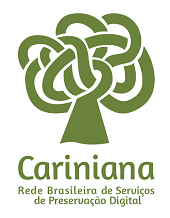Suplementação dietética com selênio orgânico melhora a estabilidade da carne suína embalada a vácuo durante o armazenamento
DOI:
https://doi.org/10.5433/1679-0359.2025v46n3p689Palavras-chave:
Mineral orgânico, Prazo de validade, Cor, Enriquecimento nutricional, Saúde.Resumo
Este estudo avaliou os efeitos da suplementação de selênio orgânico em dietas para suínos na qualidade e estabilidade da carne durante o armazenamento refrigerado a vácuo. Os animais foram categorizados em dois grupos de tratamento: CONT (grupo controle; dieta basal) e SEL (grupo experimental; dieta basal + 0,3 ppm de selênio orgânico, suplementado na fase de terminação). Após o abate, amostras de lombo foram embaladas a vácuo e estocadas durante 28 dias de armazenamento a 4 °C. A suplementação dietética de selênio resultou em um teor três vezes maior de selênio na carne. Os resultados das coordenadas de cor (a*, b*, C* e h) mostraram efeito protetor do selênio orgânico e maior estabilidade durante o armazenamento. Nenhum efeito inibitório sobre a oxidação proteica ou lipídica da carne foi observado, provavelmente devido ao baixo teor de gordura das amostras. A carne do grupo SEL apresentou maior maciez que a do grupo CONT. A suplementação com selênio orgânico na dieta dos animais promoveu significativo enriquecimento nutricional da carne e efeitos tecnológicos benéficos, proporcionando maior maciez e manutenção da estabilidade da cor durante o armazenamento.
Downloads
Referências
Aaslyng, M. D., Bejerholm, C., Ertbjerg, P., Bertram, H. C., & Andersen, H. J. (2003). Cooking loss and juiciness of pork in relation to raw meat quality and cooking procedure. Food Quality and Preference, 14(4), 277-288. doi: 10.1016/S0950-3293(02)00086-1 DOI: https://doi.org/10.1016/S0950-3293(02)00086-1
Abdolmohammad-Zadeh, H., Jouyban, A., Amini, R., & Sadeghi, G. (2013). Nickel-aluminum layered double hydroxide as a nano-sorbent for the solid phase extraction of selenium, and its determination by continuous flow HG-AAS. Microchimica Acta, 180(7), 619-626. doi: 10.1007/s00604-013-0967-x DOI: https://doi.org/10.1007/s00604-013-0967-x
Alfaia, C. M., Lopes, P. A., Madeira, M. S., Pestana, J. M., Coelho, D., Toldrá, F., & Prates, J. A. M. (2019). Current feeding strategies to improve pork intramuscular fat content and its nutritional quality. Advances in Food and Nutrition Research, 89(3), 53-94. doi: 10.1016/bs.afnr.2019.03.006 DOI: https://doi.org/10.1016/bs.afnr.2019.03.006
American Meat Science Association (2012). Meat color measurement guidelines. AMSA.
American Meat Science Association (2015). Research guidelines for cookery, sensory evaluation, and instrumental tenderness measurements of meat (2nd ed.). AMSA.
Associação Brasileira de Proteína Animal (2023). Relatório anual. ABPA. https://abpa-br.org/abpa-relatorio-anual
Association of Official Analytical Chemists (2016). Official methods of analysis (20nd ed.). AOAC.
Bao, Y., Ertbjerg, P., Estévez, M., Yuan, L., & Gao, R. (2021). Freezing of meat and aquatic food: underlying mechanisms and implications on protein oxidation. Comprehensive Reviews in Food Science and Food Safety, 20(6), 5548-5569. doi: 10.1111/1541-4337.12841 DOI: https://doi.org/10.1111/1541-4337.12841
Bertol, T. M., Coldebella, A., Santos, J. I., Fº., & Guidoni, A. L. (2017). Swine carcasses classified by degree of exudation and marbling content. Pesquisa Agropecuária Brasileira, 52(2), 121-128. doi: 10.1590/S01 00-204X2017000200006 DOI: https://doi.org/10.1590/s0100-204x2017000200006
Bobček, B., Lahučký, R., Mrázová, J., Bobček, R., Novotná, K., & Vašíček, D. (2004). Effects of dietary organic selenium supplementation on selenium content, antioxidative status of muscles and meat quality of pigs. Czech Journal of Animal Science, 49(9), 411-417. doi: 10.17221/4326-CJAS DOI: https://doi.org/10.17221/4326-CJAS
Brown, K. M., & Arthur, J. R. (2001). Selenium, selenoproteins and human health: a review. Public Health Nutrition, 4(2b), 593-599. doi: 10.1079/phn2001143 DOI: https://doi.org/10.1079/PHN2001143
Cai, S. J., Wu, C. X., Gong, L. M., Song, T., Wu, H., & Zhang, L. Y. (2012). Effects of nano-selenium on performance, meat quality, immune function, oxidation resistance, and tissue selenium content in broilers. Poultry Science, 91(10), 2532-2539. doi: 10.3382/ps.2012-02160 DOI: https://doi.org/10.3382/ps.2012-02160
Caldara, F. R., Moi, M., Santos, L. S., Paz, I. C. L. A., Garcia, R. G., Nääs, I. A., & Fernandes, A. R. M. (2013). Carcass characteristics and qualitative attributes of pork from immunocastrated animals. Asian-Australasian Journal of Animal Sciences, 26(11), 1630-1636. doi: 10.5713/ajas.2013.13160 DOI: https://doi.org/10.5713/ajas.2013.13160
Calvo, L., Toldrá, F., Aristoy, M. C., López-Bote, C. J., & Rey, A. I. (2016). Effect of dietary organic selenium on muscle proteolytic activity and water-holding capacity in pork. Meat Science, 121(11), 1-11. doi: 10. 1016/j.meatsci.2016.05.006 DOI: https://doi.org/10.1016/j.meatsci.2016.05.006
Calvo, L., Toldrá, F., Rodríguez, A. I., López-Bote, C. J., & Rey, A. I. (2017). Effect of dietary selenium source (organic vs. mineral) and muscle pH on meat quality characteristics of pigs. Food Science and Nutrition, 5(1), 94-102. doi: 10.1002/fsn3.368 DOI: https://doi.org/10.1002/fsn3.368
Castro-Ríos, K., & Narvaéz-Solarte, W. (2013). Sensory quality and cooking loss in pork meat: effect of sex and source of selenium. Biotecnología en el Sector Agropecuario y Agroindustrial, 11(1), 130-135. https://revistas.unicauca.edu.co/index.php/biotecnologia/article/view/289/488
Chen, J., Tian, M., Guan, W., Wen, T., Yang, F., Chen, F., Zhang, S., Song, J., Ren, C., Zhang, Y., & Song, H. (2019). Increasing selenium supplementation to a moderately reduced energy and protein diet improves antioxidant status and meat quality without affecting growth performance in finishing pigs. Journal of Trace Elements in Medicine and Biology: Organ of the Society for Minerals and Trace Elements, 56(6), 38-45. doi: 10.1016/j.jtemb.2019.07.004 DOI: https://doi.org/10.1016/j.jtemb.2019.07.004
Chen, L., Zhou, G., & Zhang, W. (2015). Effects of high oxygen packaging on tenderness and water holding capacity of pork through protein oxidation. Food and Bioprocess Technology, 8(11), 2287-2297. doi: 10. 1007/s11947-015-1566-0 DOI: https://doi.org/10.1007/s11947-015-1566-0
Cisneros, F., Ellis, M., McKeith, F. K., McCaw, J., & Fernando, R. L. (1996). Influence of slaughter weight on growth and carcass characteristics, commercial cutting and curing yields, and meat quality of barrows and gilts from two genotypes. Journal of Animal Science, 74(5), 925-933. doi: 10.2527/1996.745925x DOI: https://doi.org/10.2527/1996.745925x
Collery, P. (2018). Strategies for the development of selenium-based anticancer drugs. Journal of Trace Elements in Medicine and Biology: Organ of the Society for Minerals and Trace Elements, 50(6), 498-507. doi: 10.1016/j.jtemb.2018.02.024 DOI: https://doi.org/10.1016/j.jtemb.2018.02.024
Colombo, G., Clerici, M., Garavaglia, M. E., Giustarini, D., Rossi, R., Milzani, A., & Dalle-Donne, I. (2016). A step-by-step protocol for assaying protein carbonylation in biological samples. Journal of Chromatography. B, Analytical Technologies in the Biomedical and Life Sciences, 1019(8), 178-190. doi: 10.1016/j.jchromb.2015.11.052 DOI: https://doi.org/10.1016/j.jchromb.2015.11.052
Crackel, R. L., Gray, I. J., Pearson, A. M., Booren, A. M., & Buckley, D. J. (1988). Some further observations on the TBA test as an index of lipid oxidation in meats. Food Chemistry, 28(3), 187-196. doi: 10.1016/ 0308-8146(88)90050-7 DOI: https://doi.org/10.1016/0308-8146(88)90050-7
Destefanis, G., Brugiapaglia, A., Barge, M. T., & Dal Molin, E. (2008). Relationship between beef consumer tenderness perception and Warner–Bratzler shear force. Meat Science, 78(3), 153-156. doi: 10.1016/j. meatsci.2007.05.031 DOI: https://doi.org/10.1016/j.meatsci.2007.05.031
Devol, D. L., Mckeith, F. K., Bechtel, P. J., Novakofski, J., Shanks, R. D., & Carr, T. R. (1988). Variation in composition and palatability traits and relationships between muscle characteristics and palatability in a random sample of pork carcasses. Journal of Animal Science, 66(2), 385-395. doi: 10.2527/jas1988.662 385x DOI: https://doi.org/10.2527/jas1988.662385x
Domínguez, R., Pateiro, M., Munekata, P. E S., Zhang, W., Garcia-Oliveira, P., Carpena, M., Prieto, M. A., Bohrer, B., & Lorenzo, J. M. (2021). Protein oxidation in muscle foods: a comprehensive review. Antioxidants, 11(1), 1-24. doi: 10.3390/antiox11010060 DOI: https://doi.org/10.3390/antiox11010060
Downs, K. M., Hess, J. B., & Bilgili, S. F. (2000). Selenium source effect on broiler carcass characteristics, meat quality and drip loss. Journal of Applied Animal Research, 18(1), 61-72. doi: 10.1080/09712119. 2000.9706324 DOI: https://doi.org/10.1080/09712119.2000.9706324
Geng, L., Liu, K., & Zhang, H. (2023). Lipid oxidation in foods and its implications on proteins. Frontiers in Nutrition, 10(6), 1192-2199. doi: 10.3389/fnut.2023.1192199 DOI: https://doi.org/10.3389/fnut.2023.1192199
Gravador, R. S., Luciano, G., Jongberg, S., Bognanno, M., Scerra, M., Andersen, M. L., Lund, M. N., & Priolo, A. (2015). Fatty acids and oxidative stability of meat from lambs fed carob-containing diets. Food Chemistry, 182(17), 27-34. doi: 10.1016/j.foodchem.2015.02.094 DOI: https://doi.org/10.1016/j.foodchem.2015.02.094
Hopkins, D. L. (2017). The eating quality of meat: II-Tenderness. In F. Toldrá (Ed.), Lawrie’s meat science (pp. 357-381). UK. DOI: https://doi.org/10.1016/B978-0-08-100694-8.00012-1
Instrução Normativa n° 75, de 08 de outubro de 2020. Diário Oficial da União n 195 - Sessão A. Ministério da Saúde/Agência Nacional de Vigilância Sanitária/Diretoria Colegiada.
Jankowiak, H., Cebulska, A., & Bocian, M. (2021). The relationship between acidification (pH) and meat quality traits of polish white breed pigs. European Food Research and Technology, 247(11), 2813-2820. doi: 10.1007/s00217-021-03837-4 DOI: https://doi.org/10.1007/s00217-021-03837-4
Jeleníková, J., Pipek, P., & Miyahara, M. (2008). The effects of breed, sex, intramuscular fat and ultimate pH on pork tenderness. European Food Research and Technology, 227(4), 989-994. doi: 10.1007/s00217-007-0810-x DOI: https://doi.org/10.1007/s00217-007-0810-x
Jensen, J. M., Prestat, C., Ryan, K. J., Robbins, K. L., Homco-Ryan, C. L., Mckeith, F., & Brewer, M. S. (2007). Enhancement solution effects on shelf-life, color and sensory characteristics of pork chops during retail display. Journal of Food Quality, 26(4), 271-283. doi: 10.1111/j.1745-4557.2003.tb00245.x DOI: https://doi.org/10.1111/j.1745-4557.2003.tb00245.x
Jiang, J., Tang, X., Xue, Y., Lin, G., & Xiong, Y. L. (2017). Dietary linseed oil supplemented with organic selenium improved the fatty acid nutritional profile, muscular selenium deposition, water retention, and tenderness of fresh pork. Meat Science, 131(9), 99-106. doi: 10.1016/j.meatsci.2017.03.014 DOI: https://doi.org/10.1016/j.meatsci.2017.03.014
Jongberg, S., Tørngren, M. A., Gunvig, A., Skibsted, L. H., & Lund, M. N. (2013). Effect of green tea or rosemary extract on protein oxidation in Bologna type sausages prepared from oxidatively stressed pork. Meat Science, 93(3), 538-546. doi: 10.1016/j.meatsci.2012.11.005 DOI: https://doi.org/10.1016/j.meatsci.2012.11.005
Ju, Y., Liu, M., Huang, L., Luo, Y., Qi, L., Ye, J., Wu, X., Cao, N., Bo, J., Liu, X., Yan, Y., & Li, Y. (2021). Effects of selenium Auricularia cornea culture supplementation on growth performance, antioxidant status, tissue selenium concentration and meat quality in growing-finishing pigs. Animals, 11(9), 2701. doi: 10.3390/ani11092701 DOI: https://doi.org/10.3390/ani11092701
Kim, Y. Y., & Mahan, D. C. (2001). Comparative effects of high dietary levels of organic and inorganic selenium on selenium toxicity of growing‐finishing pigs. Journal of Animal Science, 79(4), 942-948. doi: 10.2527/2001.794942x DOI: https://doi.org/10.2527/2001.794942x
Li, J. G., Zhou, J. C., Zhao, H., Lei, X. G., Xia, X. J., Gao, G., & Wang, K. N. (2011). Enhanced water-holding capacity of meat was associated with increased Sepw1 gene expression in pigs fed selenium-enriched yeast. Meat Science, 87(2), 95-100. doi: 10.1016/j.meatsci.2010.05.019 DOI: https://doi.org/10.1016/j.meatsci.2010.05.019
Lisiak, D., Janiszewski, P., Blicharski, T., Borzuta, K., Grześkowiak, E., Lisiak, B., Powałowski, K., Samardakiewicz, Ł., Batorska, M., Skrzymowska, K., & Hammermeister, A. (2014). Effect of selenium supplementation in pig feed on slaughter value and physicochemical and sensory characteristics of meat. Annals of Animal Science, 14(1), 213-222. doi: 10.2478/aoas-2013-0063 DOI: https://doi.org/10.2478/aoas-2013-0063
Lundstrom, K., & Malmfors, G. (1985). Variation in light scattering and water-holding capacity along the porcine Longissimus dorsi muscle. Meat Science, 15(4), 203-214. doi: 10.1016/0309-1740(85)90076-2 DOI: https://doi.org/10.1016/0309-1740(85)90076-2
Madeira, M. S., Lopes, P. A., Costa, P., Coelho, D., Alfaia, C. M., & Prates, J. A. M. (2017). Reduced protein diets increase intramuscular fat of psoas major, a red muscle, in lean and fatty pig genotypes. Animal, 11(11), 2094-2102. doi: 10.1017/S1751731117000921 DOI: https://doi.org/10.1017/S1751731117000921
Mahan, D. C., & Parrett, N. A. (1996). Evaluating the efficacy of selenium-enriched yeast and sodium selenite on tissue selenium retention and serum glutathione peroxidase activity in grower and finisher swine. Journal of Animal Science, 74(12), 2967-2974. doi: 10.2527/1996.74122967x DOI: https://doi.org/10.2527/1996.74122967x
Mahan, D. C., Azain, M., Crenshaw, T. D., Cromwell, G. L., Dove, C. R., Kim, S. W., Lindemann, M. D., Miller, P. S., Pettigrew, J. E., Stein, H. H., & Van Heugten, E. (2014). Supplementation of organic and inorganic selenium to diets using grains grown in various regions of the United States with differing natural Se concentrations and fed to grower–finisher swine. Journal of Animal Science, 92(11), 4991-4997. doi: 10.2527/jas.2014-7735 DOI: https://doi.org/10.2527/jas.2014-7735
Mahan, D. C., Cline, T. R., & Richert, B. (1999). Effects of dietary levels of selenium-enriched yeast and sodium selenite as selenium sources fed to growing-finishing pigs on performance, tissue selenium, serum glutathione peroxidase activity, carcass characteristics, and loin quality. Journal of Animal Science, 77(8), 2172-2179. doi: 10.2527/1999.7782172x DOI: https://doi.org/10.2527/1999.7782172x
Ministério da Agricultura, Pecuária e Abastecimento - MAPA (2016). Suinocultura de baixa emissão de carbono: tecnologias de produção mais limpa e aproveitamento econômico dos resíduos da produção de suínos. MAPA. Secretaria de Mobilidade Social, do Produtor Rural e do Cooperativismo. Brasília, Brasil.
Mokrzycki, W. S., & Tatol, M. (2012). Colour difference ΔE - A survey. Machine Graphics and Vision International Journal, 20(4), 383-411. doi: 10.5555/3166160.3166161
Pappas, A. C., Zoidis, E., Papadomichelakis, G., & Fegeros, K. (2012). Supranutritional selenium level affects fatty acid composition and oxidative stability of chicken breast muscle tissue. Journal of Animal Physiology and Animal Nutrition, 96(3), 385-394. doi: 10.1111/j.1439-0396.2011.01152.x DOI: https://doi.org/10.1111/j.1439-0396.2011.01152.x
Peres, L. M., Bridi, A. M., Silva, C. A., Andreo, N., Barata, C. C. P., & Dário, J. G. N. (2014). Effect of supplementing finishing pigs with different sources of chromium on performance and meat quality. Revista Brasileira de Zootecnia, 43(7), 369-375. doi: 10.1590/S1516-35982014000700005 DOI: https://doi.org/10.1590/S1516-35982014000700005
Portaria n° 365, de 16 de julho de 2021. Diário Oficial da União n 138-A - Sessão 1. Ministério da Agricultura, Pecuária e Abastecimento/Secretaria de Defesa Agropecuária.
Richardson, E. L., Fields, B., Dilger, A. C., & Boler, D. D. (2018). The effects of ultimate pH and color on sensory traits of pork loin chops cooked to a medium-rare degree of doneness. Journal of Animal Science, 96(9), 3768-3776. doi: 10.1093/jas/sky258 DOI: https://doi.org/10.1093/jas/sky258
Ripoll, G., Joy, M., & Muñoz, F. (2011). Use of dietary vitamin E and selenium (Se) to increase the shelf life of modified atmosphere packaged light lamb meat. Meat Science, 87(1), 88-93. doi: 10.1016/j.meatsci. 2010.09.008
Salueña, B. H., Gamasa, C. S., Rubial, J. M. D., & Odriozola, C. A. (2019). CIELAB color paths during meat shelf life. Meat Science, 157(11), 107889. doi: 10.1016/j.meatsci.2019.107889 DOI: https://doi.org/10.1016/j.meatsci.2019.107889
Santos, S. K., Rosset, M., Miqueletto, M. M., Jesus, R. M. M., Sotomaior, C. S., & Macedo, R. E. F. (2020). Effects of dietary supplementation with quebracho tannins on oxidation parameters and shelf life of lamb meat. Food Science and Technology, 42(1), e55920. doi: 10.1590/fst.55920 DOI: https://doi.org/10.1590/fst.55920
Seydim, A. C., Acton, J. C., Hall, M. A., & Dawson, P. L. (2006). Effects of packaging atmospheres on shelf-life quality of ground ostrich meat. Meat Science, 73(3), 503-510. doi: 10.1016/j.meatsci.2006.01.010 DOI: https://doi.org/10.1016/j.meatsci.2006.01.010
Silva, V. A., Bertechini, A. G., Clemente, A. H. S., Freitas, L. F. V. B. de, Nogueira, B. R. F., Oliveira, B. L. de, & Ramos, A. L. S. (2019). Different levels of selenomethionine on the meat quality and selenium deposition in tissue of finishing pigs. Journal of Animal Physiology and Animal Nutrition, 103(6), 1866-1874. doi: 10.1111/jpn.13179 DOI: https://doi.org/10.1111/jpn.13179
Štefanka, P., Bučko, O., Gálik, B., Čanigová, M., & Debrecéni, O. (2013). The analysis of the carcass characteristics and physical-technological quality of pork after the using diet with the addition of organic chromium and selenium. Journal of Central European Agriculture, 14(3), 1039-1049. doi: 10.5513/JCE A01/14.3.1302 DOI: https://doi.org/10.5513/JCEA01/14.3.1302
Svoboda, M., Fajt, Z., Baňoch, T., Drábek, J., & Saláková, A. (2010). The use of selenium enriched Enterococcus faecium as an alternative selenium source for growing-finishing pigs. Acta Veterinaria Brno, 79(4), 511-517. doi: 10.2754/avb201079040511 DOI: https://doi.org/10.2754/avb201079040511
Svoboda, M., Saláková, A., Fajt, Z., Kotrbácek, V., Ficek, R., & Drábek, J. (2009). Efficacy of Se-enriched alga Chlorella spp. and Se- enriched yeast on tissue selenium retention and carcass characteristics in finisher pigs. Acta Veterinaria Brno, 78(4), 579-587. doi: 10.2754/avb200978040579 DOI: https://doi.org/10.2754/avb200978040579
Terevinto, A., Cabrera, M. C., Zacarri, F., & Saadoun, A. (2023). The oxidative and color stability of beef from steers fed pasture of concentrate during retail display. Animals, 13(18), 2972. doi: 10.3390/ani1318 2972 DOI: https://doi.org/10.3390/ani13182972
Thun, R., Gajewski, Z., & Janett, F. (2006). Castration in male pigs: techniques and animal welfare issues. Journal of Physiology and Pharmacology, 57(8), 189-194. https://www.jpp.krakow.pl/journal/archive/ 11_06_s8/articles/14_article.html
Vignola, G., Lambertini, L., Mazzone, G., Giammarco, M., Tassinari, M., Martelli, G., & Bertin, G. (2009). Effects of selenium source and level of supplementation on the performance and meat quality of lambs. Meat Science, 81(4), 678-685. doi: 10.1016/j.meatsci.2008.11.009 DOI: https://doi.org/10.1016/j.meatsci.2008.11.009
Vyncke, W. (1970). Direct determination of the thiobarbituric acid value in trichloroacetic acid extracts of fish as e measure of oxidative rancidity. Fette, Seifen, Anstrichmittel, 72(12), 1084-1087. doi: 10.1002/lipi. 19700721218 DOI: https://doi.org/10.1002/lipi.19700721218
Warner, R. (2014). Measurement of meat quality: measurements of water-holding capacity and color - objective and subjective. In C. Devine, & M. Dikeman (Eds.), Encyclopedia of meat sciences (2nd ed., v. 2, pp. 164-171). Oxford. DOI: https://doi.org/10.1016/B978-0-12-384731-7.00210-5
Wolter, B., Ellis, M., Mckeith, F. K., Miller, K. D., & Mahan, D. C. (1999). Influence of dietary selenium source on growth performance, and carcass and meat quality characteristics in pigs. Canadian Journal of Animal Science, 79(1), 119-121. doi: 10.4141/A98-028 DOI: https://doi.org/10.4141/A98-028
Zhan, X., Wang, M., Zhao, R., Li, W., & Xu, Z. (2007). Effects of different selenium source on selenium distribution, loin quality and antioxidant status in finishing pigs. Animal Feed Science and Technology, 132(3-4), 202-211. doi: 10.1016/j.anifeedsci.2006.03.020 DOI: https://doi.org/10.1016/j.anifeedsci.2006.03.020
Zhang, S., Xie, Y., Li, M., Yang, H., Li, S., Li, J., Xu, Q., Yang, W., & Jiang, S. (2020). Effects of different selenium sources on meat quality and shelf life of fattening pigs. Animals, 10(4), 615. doi: 10.3390/ani 10040615 DOI: https://doi.org/10.3390/ani10040615
Zhao, J., Li, K., Su, R., Liu, W., Ren, Y., Zhang, C., Du, M., & Zhang, J. (2017). Effect of dietary Tartary buckwheat extract supplementation on growth performance, meat quality and antioxidant activity in ewe lambs. Meat Science, 134(12), 79-85. doi: 10.1016/j.meatsci.2017.07.016 DOI: https://doi.org/10.1016/j.meatsci.2017.07.016
Downloads
Publicado
Como Citar
Edição
Seção
Licença
Copyright (c) 2025 Marcela Maíra Miqueletto, Renata Ernlund Freitas de Macedo, Sthefany Kamile dos Santos, Leandro Batista Costa, Marcos Aronovich

Este trabalho está licenciado sob uma licença Creative Commons Attribution-NonCommercial 4.0 International License.
Semina: Ciências Agrárias adota para suas publicações a licença CC-BY-NC, sendo os direitos autorais do autor, em casos de republicação recomendamos aos autores a indicação de primeira publicação nesta revista.
Esta licença permite copiar e redistribuir o material em qualquer meio ou formato, remixar, transformar e desenvolver o material, desde que não seja para fins comerciais. E deve-se atribuir o devido crédito ao criador.
As opiniões emitidas pelos autores dos artigos são de sua exclusiva responsabilidade.
A revista se reserva o direito de efetuar, nos originais, alterações de ordem normativa, ortográfica e gramatical, com vistas a manter o padrão culto da língua e a credibilidade do veículo. Respeitará, no entanto, o estilo de escrever dos autores. Alterações, correções ou sugestões de ordem conceitual serão encaminhadas aos autores, quando necessário.















